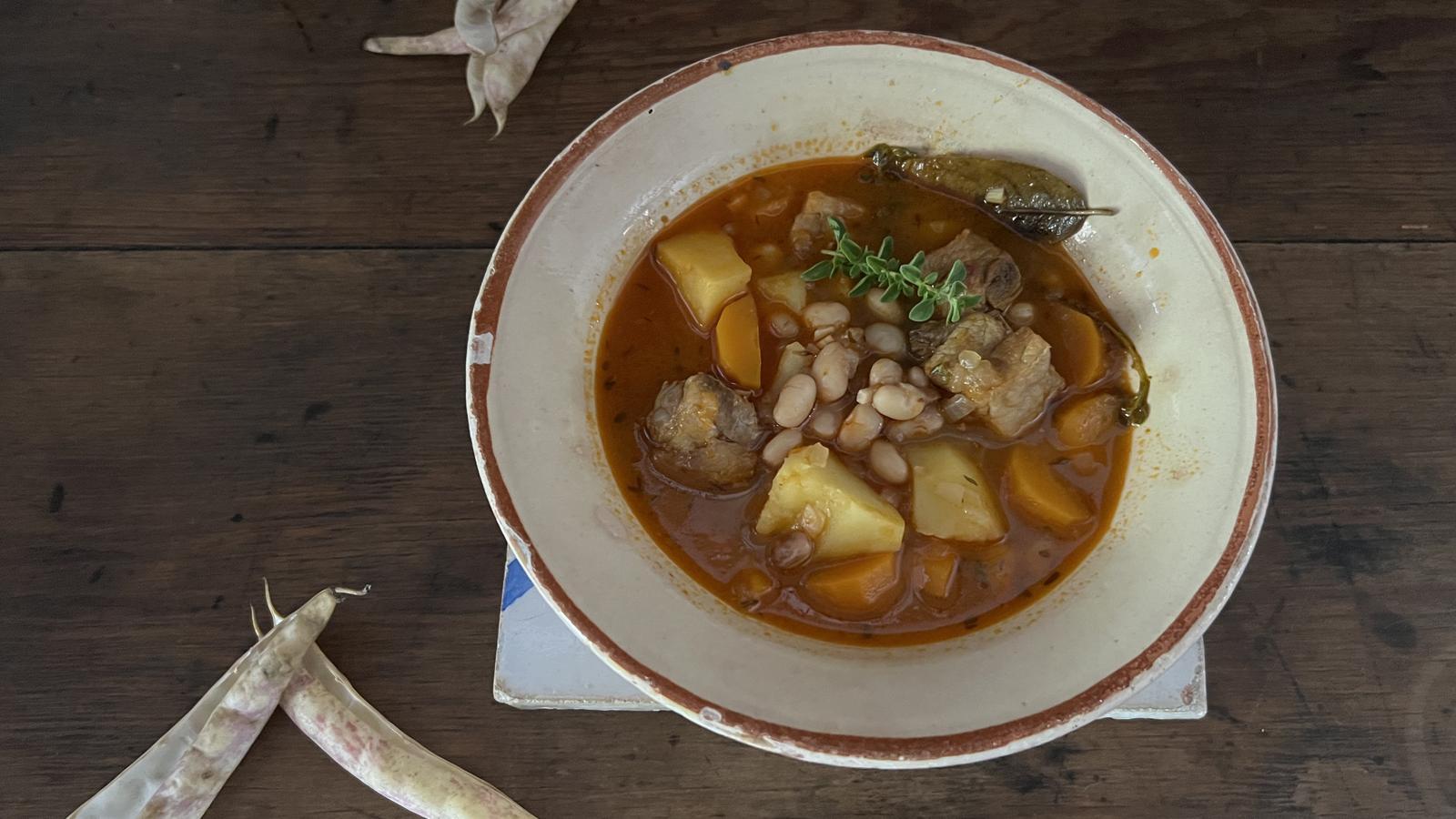PalmFor centuries, legumes have been one of the pillars of our diet: broad beans, chickpeas, lentils, and beans have been part of every household's pantry. Legumes were the main source of protein for many families, especially the poorest. Cooked with aromatic herbs and seasonal vegetables, or with a piece of meat or sausage, they became dishes that were filling and comforting. Legumes are not very demanding; they can grow in poor, dry soils, and they don't need much fertilizer or overwatering. They can be dried and stored easily. Despite their benefits, legumes were not always well regarded. In the well-to-do circles of medieval society, they were considered flatulent and inflammatory, and were also a food destined for the poor, convents, and those who practiced fasting. They were eaten dry and tender and boiled with almond milk or meat, accompanied by other ingredients that added flavor to the dish. It is very common to find it mentioned in the recipe books of religious communities. In the book The kitchen of the Carmelites In the work of Francisco del Santísimo Sacramento, a Discalced Carmelite originally from the city of Reus and a cook in the late 18th and early 19th centuries, we find a whole chapter dedicated to escudillas: how to prepare legumes, especially chickpeas, broad beans, dried peas and beans. Another more recent example can be found in The hermits' kitchen From Miguel de Binifar. The author explains that cooking was a common dish in the community's diet. They usually cooked an average of twice a week, and enough was made to be eaten with rice or noodles the second day.
Both "cocido" and "escudella" refer to dishes made with legumes. These are recipes where the ingredients are boiled and accompanied by vegetables and herbs. "Escudella" takes its name from a container. According to the DCVB, it is a deep utensil, hemispherical or approximately semi-oval in shape, with a variable capacity, but less than one liter, used to drink broth, milk, coffee, tea, etc.
The first recipes for escudella in Mallorca appear in the Llabrés Cookbook, In the 19th century, these are the tender broad bean escudella, the legume escudella, and the fresh escudella. In all three recipes, the ingredients are boiled in fresh water for long periods of time, until the ingredients are thoroughly cooked. Only the tender broad bean escudella is more substantial because it is made with blood sausage, sobrasada (sausage), and pork chop, unlike the others, which are cooked only with vegetables and aromatic herbs. When the escudella is cooked with tender legumes, it is known as the fresh escudella and is a typical dish of the summer months. It is a simple and understated dish. The adjective "fresh" does not refer to the temperature of the dish, but rather to the fact that it is made with fresh and tender ingredients. Generally, painted beans or "real" beans are used, the pods of which are white and speckled with reddish splashes. These days, it's a dish that's falling out of favor, and it's not easy to find beans unless you're at vegetable markets or from farmers themselves.
Today's recipe is made by my mother-in-law, Antonia Martorell. The dish begins with a sauté, rather than boiling all the ingredients, so it takes a little longer to prepare. However, the end result is worth it. I hope you like it.
Fresh escudella
We'll sauté the chop. Meanwhile, we'll finely chop the onion and garlic and grate the tomatoes. When the meat is well sautéed, we'll add the onion and garlic. When it's well cooked, we'll add the tomato and let it cook thoroughly. When everything has a good color, we'll add the sliced carrots, the peppers, the beans, and the herbs. Mix well and add the water. After 10 minutes, we'll add the diced potatoes and cook for another 20 minutes. We'll taste it and season with salt and pepper. When the beans are cooked, we'll turn off the heat and serve.
You can add other vegetables: zucchini, green beans, cauliflower...
Ingredients
l 300 g of tender painted beans (already hulled)
l 300 g of flat pork chop
l 1 onion
l 2-3 ramellet tomatoes
l 1 tsp pepper on board
l 2 carrots
l 2 bay leaves
l 3 potatoes
1.5 l of water


